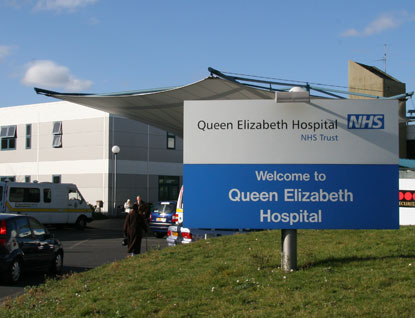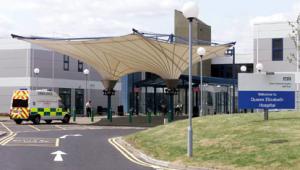Debt-ridden South London Healthcare NHS Trust is to be broken up after Health Secretary Jeremy Hunt said it continued to pose a risk to patients and place additional financial pressure on the rest of the NHS.
 The trust, which Hunt described as the ‘most financially challenged’ in England, will be dissolved by October 1, with its three hospitals taken over by neighbouring trusts.
The trust, which Hunt described as the ‘most financially challenged’ in England, will be dissolved by October 1, with its three hospitals taken over by neighbouring trusts.Hunt said past attempts to resolve the financial problems at the trust had failed. It was losing more than £1m a week and its debts were set to hit £200m by the end of the year. Meeting this deficit meant money was being taken away from patients elsewhere, he added.
The trust has been in administration since last July, and the special administrator Matthew Kershaw recommended in October that it should be broken up.
Hunt today said he accepted Kershaw’s ‘broad recommendations’. These include requiring the trust’s hospitals – Queen Elizabeth Hospital in Woolwich, Queen Mary’s in Sidcup and the Princess Royal in Bromley – to make £74.9m of efficiency savings over three years identified by the administrator.
The Department of Health also agreed to pay the ‘excess costs’ of the Private Finance Initiative buildings at the Queen Elizabeth and Princess Royal Hospitals until the contracts expire. It will also write off accumulated debts before the hospitals transfer to the new trusts and provide ‘an appropriate level’ of transitional funding to cover implementation.
However, Hunt rejected Kershaw’s proposal for Accident & Emergency services at Lewisham hospital to be scrapped when Lewisham Healthcare NHS Trust takes over the Queen Elizabeth Hospital in Woolwich.
Although he understood ‘the financial rationale’ for closing Lewisham A&E, Hunt said the interests of local patients would be served by allowing it to remain open. It will, however, be downgraded, admitting only patients with less serious conditions.
‘The longstanding problems at South London Healthcare NHS Trust must not be allowed to compromise patient care in the future,’ Hunt said. ‘Hundreds of millions of pounds have been spent on paying for debt rather than improving patient care for the local community in southeast London.
‘What is in the clinical interests of patients in southeast London has been at the heart of my decision-making process, and as a result I have followed clinical advice to keep open the A&E in Lewisham.’
NHS medical director Sir Bruce Keogh said health care provision in southeast London was ‘at a turning point’.
He added: ‘We need to strike the right balance between ensuring that all patients have access to the best possible specialist treatment whilst providing safe, effective and convenient services close to home.
‘I expect that balance to result in about three-quarters of patients currently seen in Lewisham A&E continuing to receive complete care at Lewisham Hospital and about a quarter being transferred for more specialist treatment elsewhere.’
Responding to the report, the NHS Confederation said it was important that changes could be made to hospital services without ‘trench warfare’ of protests and arguments.
Chief executive Mike Farrar said that although changes to local health services always provoked concern: ‘Where the evidence shows that change will save lives or improve experience and outcomes for the population, we should expect political support.
‘In many cases, the services in place are not organised to meet the needs of the local population. This can have a significant impact on the finances of NHS organisations, and risks affecting patient care.’
Trade union Unison said it would campaign to protect the full range of services at Lewisham. A reduced service could prove a dangerous replacement of the current provision, general secretary Dave Prentis said.
‘The long-term impact of the downgrade – and whether today's announcement is just a repackaging of the original plans – remains to be seen.
‘Lewisham is not the first and won’t be the last hospital to come under attack by this government. Its disastrous NHS reorganisation and squeezes on funding are causing cuts and closures across the country.’




















